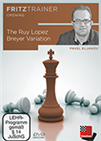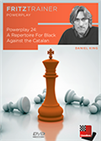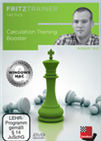Looking to recover the crown
 The 2010 edition of the Chess Olympiad was played, for a second time in history, as an 11-round Swiss tournament. The massive team event used to last 14 rounds, with FIDE trying out a 13-round format for a few editions before settling on the now customary 11-rounder. The event was played in Khanty-Mansiysk, an oft-seen host city of FIDE events during Kirsan Ilyumzhinov’s presidency.
The 2010 edition of the Chess Olympiad was played, for a second time in history, as an 11-round Swiss tournament. The massive team event used to last 14 rounds, with FIDE trying out a 13-round format for a few editions before settling on the now customary 11-rounder. The event was played in Khanty-Mansiysk, an oft-seen host city of FIDE events during Kirsan Ilyumzhinov’s presidency.
Russia had not hosted an Olympiad since 1994, when they got gold and bronze medals (with their B team) in Moscow. For them, this was the perfect chance to recover their supremacy as the strongest national chess team. Ever since their victory in 2002 — the last time Garry Kasparov played on top board — they had failed to grab gold medals despite always presenting the highest-ranked squad.
 Pavel Eljanov explains in depth what Gyula Breyer already saw in 1911 and what became an opening choice of the likes of Kasparov, Kramnik, Anand or Carlsen. The Breyer Variation, which is characterised by the knight retreat to b8.
Pavel Eljanov explains in depth what Gyula Breyer already saw in 1911 and what became an opening choice of the likes of Kasparov, Kramnik, Anand or Carlsen. The Breyer Variation, which is characterised by the knight retreat to b8.With five 2700+ rated players, the Russians were once again the favourites. Top boards Vladimir Kramnik and Alexander Grischuk were top 10 players at the time, while Sergey Karjakin was making his debut for the national team in an Olympiad after his 2009 transfer from Ukraine. Experienced grandmasters Peter Svidler (rated 2731) and Vladimir Malakhov (2725) sat on boards 4 and 5.
As has become the norm in Olympiads, though, there was no lack of strong contenders for the title. Ukraine and China both featured teams with a 2700+ rating average, much like Russia’s second team, which had a 20-year-old Ian Nepomniachtchi on top board. Hungary and the defending champions from Armenia both had squads with a 2698 rating average, while Azerbaijan, Bulgaria and the United States also presented very strong lineups.

Russia and Ukraine drew in round 8
A small margin of error
Given the strength of the main contenders for first place, it quickly became apparent that a single misstep was going to be decisive. While the eventual winners from Ukraine surprisingly drew in round 3 against Croatia, no fewer than seven teams, including both Russian squads, Hungary and Ukraine, kicked off the event with four consecutive wins.
The turning point came in round 5, when Hungary defeated Russia thanks to Peter Leko’s victory over Grischuk on board 1. Besides the first round, this was the only time the favourites did not include Kramnik in their lineup.
Out of a Catalan Opening, Leko showcased his excellent technique to take down Grischuk from what started as a materially balanced endgame.
Russia 2 also lost in round 5, against Armenia, leaving the team headed by Levon Aronian sharing the lead with Hungary and Georgia.
 On this DVD Grandmaster Daniel King offers you a repertoire for Black against the Catalan, based around maintaining the rock of a pawn on d5. Keeping central control ultimately gives Black good chances to launch an attack against the enemy king.
On this DVD Grandmaster Daniel King offers you a repertoire for Black against the Catalan, based around maintaining the rock of a pawn on d5. Keeping central control ultimately gives Black good chances to launch an attack against the enemy king.Ukraine was coming from behind after its round-3 draw and was immediately paired up against Hungary. With wins by Vasyl Ivanchuk and Pavel Eljanov, both playing white, the eventual champions climbed to shared first place.
Ivanchuk, rated 2754 at the time, defeated Leko in what was his fifth consecutive win of the event — the one time he had not played was precisely in round 3, against Croatia. The Ukrainian got the upper hand in the early middlegame out of a Semi-Slav, and swiftly converted his advantage into an all-important win.
Black is in deep trouble here. There followed 35.Qg4 Qh7 36.Qh5 Qg6 (what else?) 37.Bxe5+ Kf7 38.Qf3+ Kg8 39.Qc6, and Leko threw in the towel.
After beating Georgia in round 7, Ukraine drew Russia’s first team thanks to Zahar Efimenko’s victory on board 4. With three rounds to go, the Ukrainians had become the sole leaders of the event, but they had no fewer than six teams standing a match point behind. Victories over Azerbaijan and France followed, with Russia keeping up the pace by obtaining consecutive wins over Armenia and China.
Ukraine had kept the sole lead going into the final round, with Russia the only team to remain a match point behind. Russia was paired up against Spain, while Ukraine was facing Israel. The crucial game of the deciding round was seen on board 3 of the Russia vs Spain match, where Ivan Salgado stunned Peter Svidler with the black pieces.
Svidler over-extended on the kingside, and was duly punished by an in-form Salgado. Here White is already lost — 31...Rxg5 energetically continues the attack. After 32.Bxg5 fxg5, the bishop pair and the queen will overwhelm the weakened white king.
Salgado’s win gave Spain the lead in the match, as only later did Kramnik beat Alexei Shirov to get a draw for the locals. A few minutes after Svidler resigned his game and it was certain that Russia would not get a win in their last match of the event, Ukraine and Israel quickly agreed to a draw, with Efimenko in fact having a clearly better position on board 4.

Vladimir Kramnik beat Alexei Shirov
The Ukrainians were thus the clear winners. Russia was inches away from recovering its supremacy on home soil but only got silver, while Israel took home the bronze.
Top 2 matches - Round 11
Ivanchuk leads the way
Fan favourite and former world number 2 Vasyl Ivanchuk had a fantastic performance as the leader of the Ukrainian squad. The genius from Kopychyntsi scored 8/10 points and only signed two draws throughout the event. His 2890 rating performance gave him an individual gold medal on board 1.Remarkably, Ivanchuk defeated Alexander Beliavsky, Ivan Sokolov, Peter Leko and Baadur Jobava in consecutive rounds. Against the latter, in a clash of creative minds, a sharp position appeared on the board early in the game.
 In this video course, twenty-nine examples with multiple questions are presented in the interactive format, which is ideal for a range of playing strengths. Step by step you will be taken through the complex positions.
In this video course, twenty-nine examples with multiple questions are presented in the interactive format, which is ideal for a range of playing strengths. Step by step you will be taken through the complex positions.
White cannot castle anymore. Jobava here, instead of going for 9...Bxg1, true to his style, first gave a check with 9...Re8+, pushing his opponent to give up his queen via 10.Kd1 Re1+ 11.Qxe1 Bxe1 12.Kxe1.
The Georgian star continued to give up material to keep the initiative, but Ivanchuk simply used his extra pieces to shield his king in the centre. In fact, in the final position, White’s four minor pieces are guarding the monarch!
34.Ra8 was followed by Black’s resignation. A marvellous game between two of the most exciting players in the world circuit!
All games played by Vasyl Ivanchuk
Final standings - Top 15
| 1 |
2 |
|
Ukraine |
UKR |
11 |
8 |
3 |
0 |
19 |
380,5 |
31,0 |
143 |
| 2 |
1 |
|
Russia 1 |
RUS1 |
11 |
8 |
2 |
1 |
18 |
379,5 |
28,0 |
157 |
| 3 |
11 |
|
Israel |
ISR |
11 |
7 |
3 |
1 |
17 |
367,5 |
29,0 |
148 |
| 4 |
5 |
|
Hungary |
HUN |
11 |
8 |
1 |
2 |
17 |
355,5 |
26,5 |
157 |
| 5 |
3 |
|
China |
CHN |
11 |
7 |
2 |
2 |
16 |
362,0 |
29,0 |
147 |
| 6 |
4 |
|
Russia 2 |
RUS2 |
11 |
8 |
0 |
3 |
16 |
355,0 |
29,5 |
144 |
| 7 |
6 |
|
Armenia |
ARM |
11 |
7 |
2 |
2 |
16 |
345,0 |
27,0 |
147 |
| 8 |
16 |
|
Spain |
ESP |
11 |
7 |
2 |
2 |
16 |
332,0 |
28,5 |
137 |
| 9 |
9 |
|
United States of America |
USA |
11 |
7 |
2 |
2 |
16 |
315,5 |
27,0 |
141 |
| 10 |
10 |
|
France |
FRA |
11 |
6 |
4 |
1 |
16 |
311,5 |
25,0 |
149 |
| 11 |
15 |
|
Poland |
POL |
11 |
6 |
3 |
2 |
15 |
346,5 |
29,0 |
142 |
| 12 |
7 |
|
Azerbaijan |
AZE |
11 |
6 |
3 |
2 |
15 |
333,0 |
28,0 |
143 |
| 13 |
14 |
|
Russia 3 |
RUS3 |
11 |
5 |
5 |
1 |
15 |
320,5 |
26,0 |
144 |
| 14 |
35 |
|
Belarus |
BLR |
11 |
7 |
1 |
3 |
15 |
307,5 |
27,5 |
135 |
| 15 |
13 |
|
Netherlands |
NED |
11 |
6 |
3 |
2 |
15 |
305,0 |
24,5 |
144 |
...149 teams
Links


















 The 2010 edition of the Chess Olympiad was played, for a second time in history, as an 11-round Swiss tournament. The massive team event used to last 14 rounds, with FIDE trying out a 13-round format for a few editions before settling on the now customary 11-rounder. The event was played in Khanty-Mansiysk, an oft-seen host city of FIDE events during Kirsan Ilyumzhinov’s presidency.
The 2010 edition of the Chess Olympiad was played, for a second time in history, as an 11-round Swiss tournament. The massive team event used to last 14 rounds, with FIDE trying out a 13-round format for a few editions before settling on the now customary 11-rounder. The event was played in Khanty-Mansiysk, an oft-seen host city of FIDE events during Kirsan Ilyumzhinov’s presidency.






